Comments on the 600 N / 700 N Mobility Study Due by March 31, 2021
March 21, 2021 – Salt Lake City is seeking public comment on plan options for the reconfiguration of 600 N. between Center Street (approximately 150 W) and 2200 W. Cycling Utah first called for cycling improvements in the area in 2016 and 2017 and specifically with our 600 N safety plan.
According to the City’s 600 N Study page, “The 600/700 North Mobility, Safety, and Transit Improvements Study will create a plan to transform this critical Westside Salt Lake City corridor in ways that promote safety, enable mobility for active modes and transit, and better serve the surrounding neighborhoods. With input from local stakeholders and community leaders, the Study will identify specific projects to be phased in during the next few years. In anticipation of future planned frequent transit service on the corridor, the project will determine how transit stops are oriented on the corridor.”
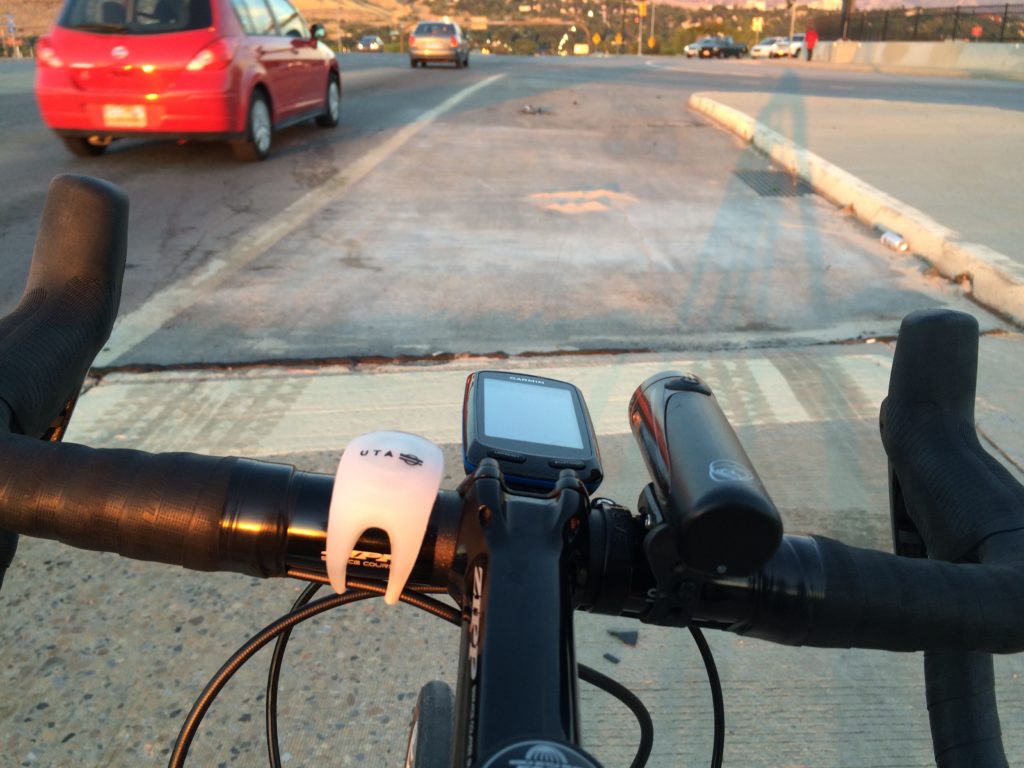
The city presents 3 different potential street treatments in storyboard format. The format is in-depth and takes awhile to digest; and is presented in both English and Spanish. It is easier to view on a desktop computer.
- Concept 1, the baseline scenario, offers some improvements including buffered bike lanes (an upgrade from the current standard bike lanes), more street trees, and pedestrian crossing islands. It retains the current 5 lane configuration of 2 travel lanes in each direction and a center turn lane.
- Concept 2, the Green Boulevard, adds a wide landscaped median in the center of the street and reduces the number of travel lanes to one each direction. It keeps the buffered bike lanes presented in the baseline scenario.
- Concept 3, the Streetside Park, adds a linear park on one side of the street with a two way bike path on edge of the park, and a protected bike lane on the other side of the street. Parking would be eliminated throughout the corridor. The City would also look at adding commuter route on 500 N for “those wishing to ride faster.”
All three concepts share better bus stops and transit routes.
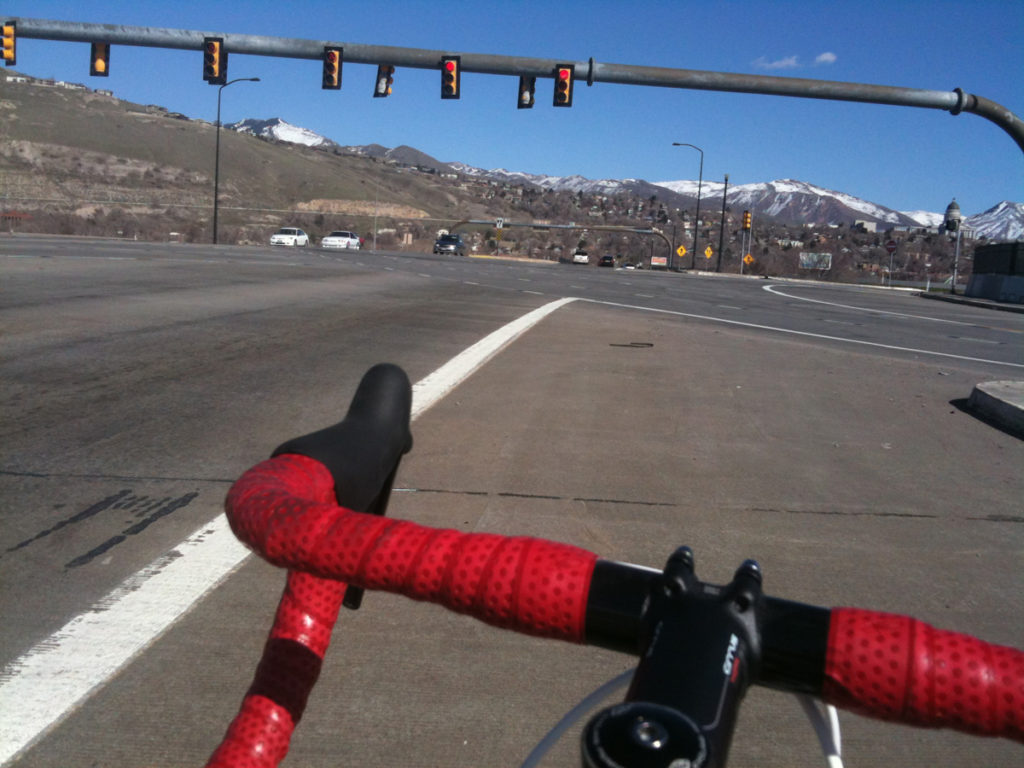
The study options are confusing in regards to the spot improvments with different treatments for places like the 600 N overpass over I-15 in each of the three concepts. Each story board has options for the spot treatments, but it’s not clear why concept 1 couldn’t have the spot treatment option presented in concept 3.
The 600 N overpass is a key failing point of the roadway currently. The SPUI interchange design is not safe for bicyclists or pedestrians, and in fact, the Mayor’s Bicycle Advisory Committee pointed this out in discussions in the early 1990’s before it was built. UDOT built the interchange and others like it along I-15 despite these concerns.
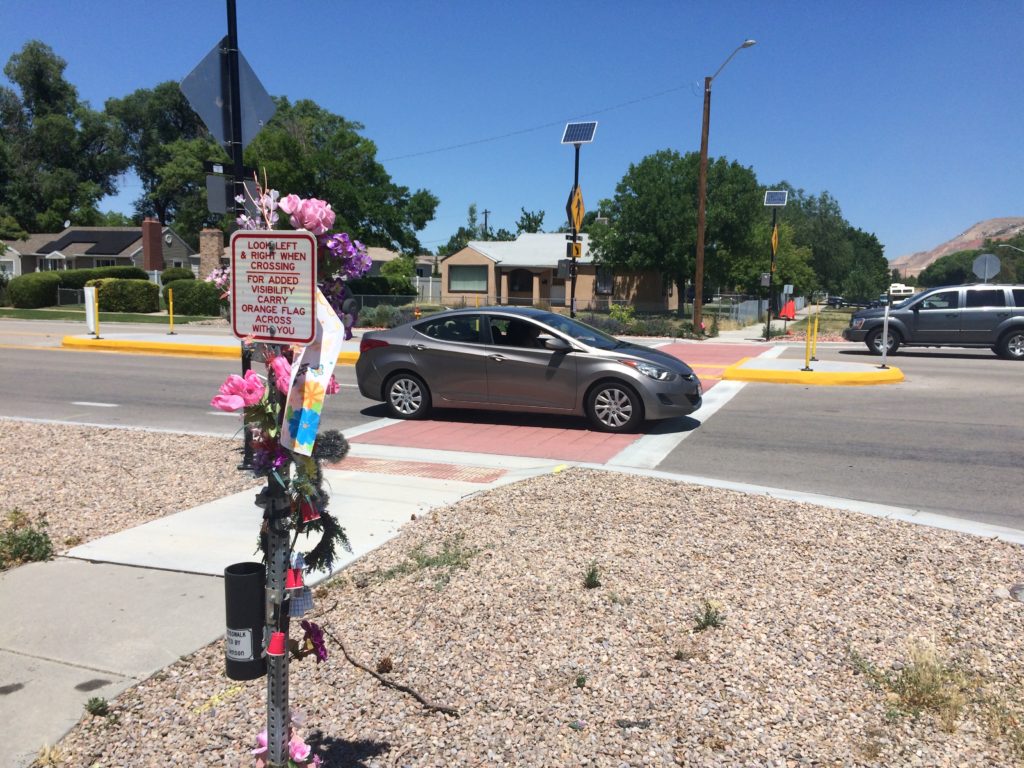
Concept 1 and 2 suggest a bike path and better pedestrian crossings on the south side of the overpass. Concept 3 suggests protected bike lanes on both sides of the overpass.
Another key area is where the road shifts from 600 N to 700 N by the Backman School and Riverside Park. Currently, this area has no bike lanes. Concept 1 proposes adding bike lanes, as do 2 and 3. However Concept 2 proposes adding roadways in the park itself, which would reduce the park size by the added roadway size in order to increase parking options.
In a recent BAC meeting, the project team noted that the entire roadway will not be rebuilt right away, and it’s not clear when the improvements will start.
How to comment:
Visit the City’s 600 N / 700 N study page. Then follow the link to the story board and survey. Or, email comments to: [email protected]
If you do send comments to the city, please consider adding them in the comment section on this post so that others can see what you have to say.
Our Comments:
Overall, it is a welcome project to see in the works. As we mentioned before, Cycling Utah called for an overhaul of 600 N in 2016 and 2017. Additionally, in a separate effort, the Rose Park Community Council called for safety improvements and a petition was started to “Slow Down 6th North“.
Each of the designs is an improvement over the current high speed, unsafe situation. Better bike lanes along the entire corridor are needed. The existing ones are ok, but when combined with too wide travel lanes and too high speed limits, 600 N is not the most comfortable street to ride. Additionally, there have been several pedestrian fatalities in the last few years, indicating that speeds are too high. While UDOT lowered the speed on the overpass to 35 mph, this remains unsafe for pedestrians and cyclists, and is not conducive to a quiet neighborhood.
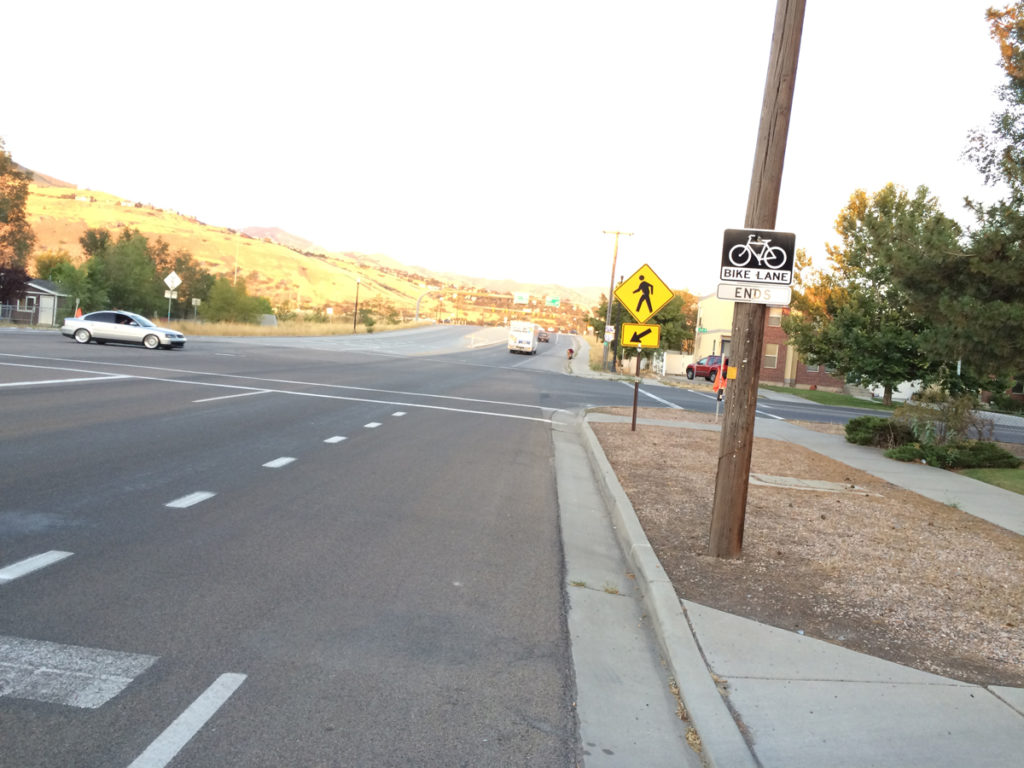
Our previous comments were the following:
- 600 North Safety Plan – 600 N. needs to be made safer for people on bikes and pedestrians. This is a key E-W connector, and is currently a nightmare for bicyclists and pedestrians wanting to cross I-15. With bike lanes on either side, making the I-15 overpass bicycle safe would help to connect Rose Park / Fair Park to Marmalade. Additionally, traffic calming and speed reductions on 600 N are needed, especially at 800 West (see http://www.ipetitions.com/petition/slow-down-6th-north)
- 600 North really needs to have a comprehensive plan from 200 West to 2200 West for better bicycling, traffic calming, better pedestrian safety, and slower speeds.
- Narrower traffic lanes in order to reduce traffic speed.
- Lower speed limit on 600 N.
- Integration with UDOT to make the overpass bicycle and pedestrian safe. It is not safe currently.
- A buffered or protected bike lane on 600 N.
- Regular sweeping of the 600 N. overpass
- Safer crossing of the 600 N. overpass for bikes and pedestrians and SPUI (Note: the 600 N and I-15 interchange is a SPUI – Single Point Urban Interchange) restriping/design.
- Continued traffic calming at 800 W and 900 W.
Much of this is addressed in the current plan. Speed limits are a noted omission. It’s unclear why Salt Lake City is so addicted to speed limits that are too high, and inappropriate for a given street. 600 N should be 25 mph throughout, including on the overpass. Seattle recently has gone to a system of 20 mph in the neighborhoods and 25 mph on arterials. Salt Lake City should do the same. Hence lowering the speed limit on 600 N needs to happen. For those of you reading this who adhere to the idea that road design is the best way to lower speed limits, we agree. However it is not the only way. Lowering speed limits actually lowers speeds too according to a study in Massachusetts, regardless of road design. Another speed limit study in Portland had similar results.
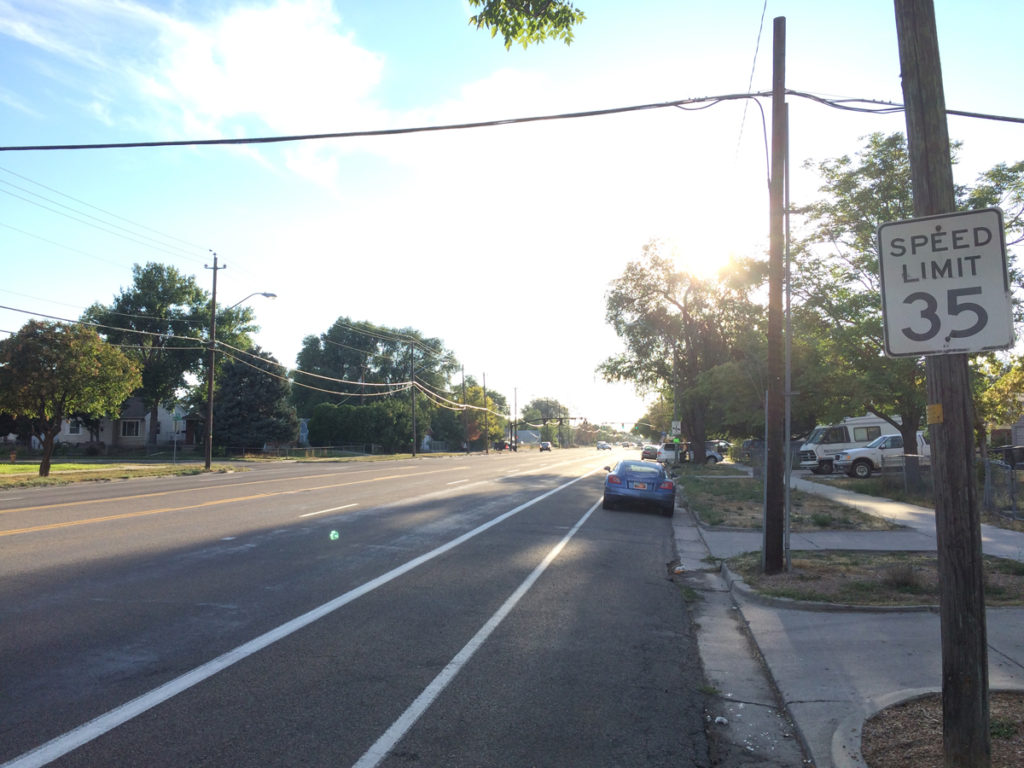
Of the three concepts, we like concepts 2 and 3 the best. The linear park idea is innovative and could change the neighborhood for the better. It includes a two way shared pathway. While these are a great option for many, they do result in increased pedestrian and bicycle conflict as use increases. It would be nice to see the path be for bicycles only, and existing sidewalks widened for pedestrians so that each has a safe off-street facility. Additionally, the road treatment on N. Temple of a bike path and a bike lane should be applied here.
Concept 3, the Linear Park, also includes making 500 N a bike commuter route. We think that’s a great idea and should happen regardless of which of the three concepts are adopted, and should happen as soon as possible regardless of the construction schedule of 600 N.
The 600 N overpass is a disaster for cyclists and pedestrians currently. We like the third concept the best in its treatment of the overpass – protected pathways and walkways on both sides of the overpass. In concepts 1 and 2, the overpass would only see slight improvements on the south side, which would force cyclists and pedestrians that are on the north side to cross the roadway somewhere between 600 W and 300 W, which is not a safe proposition.
Concept 3 calls for protected bike lanes on the north side of the roadway. We would like to see protected bike lanes on both sides of the street, especially in concept 2 if that is adopted. Rather than the bulbouts that allow for streetside parking, we’d rather see a parking protected (or no parking allowed) bike lane if either concept 1 or 2 is chosen.
The area around Riverside Park needs bike lanes. We would welcome them here. Concept 2 unfortunately adds roadways within the park and thus would reduce the size of the park. That’s probably not a good change for open space preservation. We’d like to see protected bike lanes here on both sides of the street.
Lastly, while it’s not mentioned in any of the concepts, removing the slip lane at the intersection of 2200 W and 700 N needs to happen to increase safety for cyclists and pedestrians.
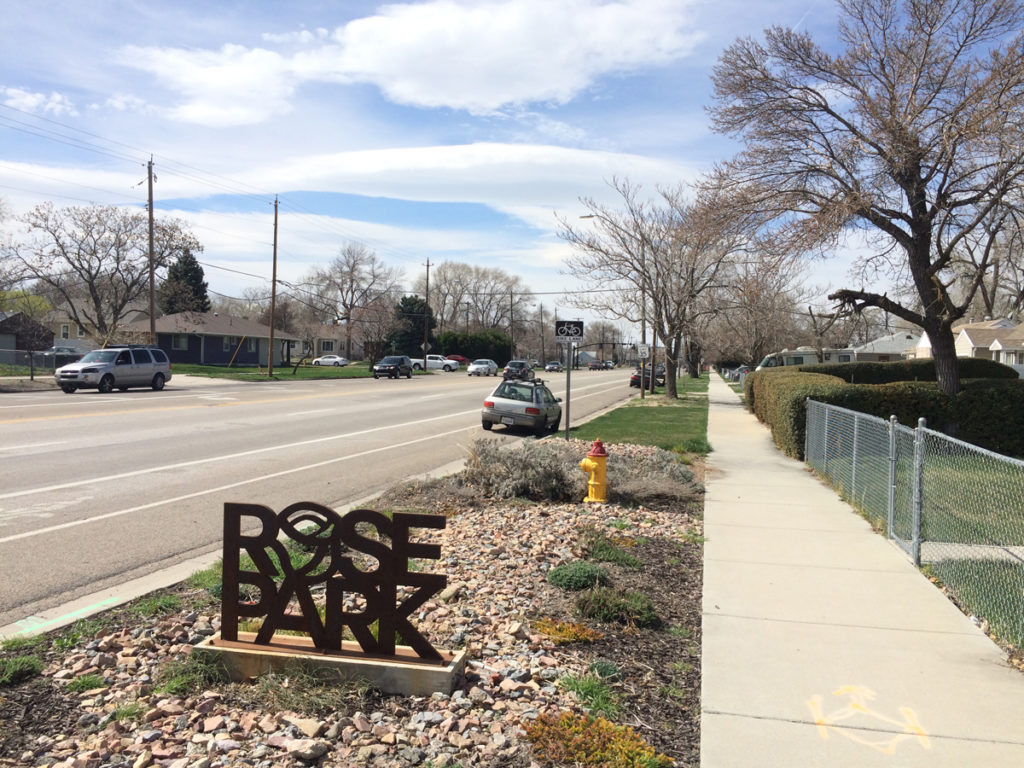


I am so in favor of all the proposals with the pending improvements slated for 600 N. Our city is in much need of better and safer ways to get around on bicycle. I bike nearly every day, I live on the Westside and most often bike to the downtown. At 71 years of age I always look for the safest route in my daily rides. I just spent a month down in Tucson, AZ where they have a 55 mile loop around their city and a total of 250 miles of dedicated bike trail completely away from cars. Can’t we do this little bit of infrastructural improvement to safe lives and create a more livable city environment?